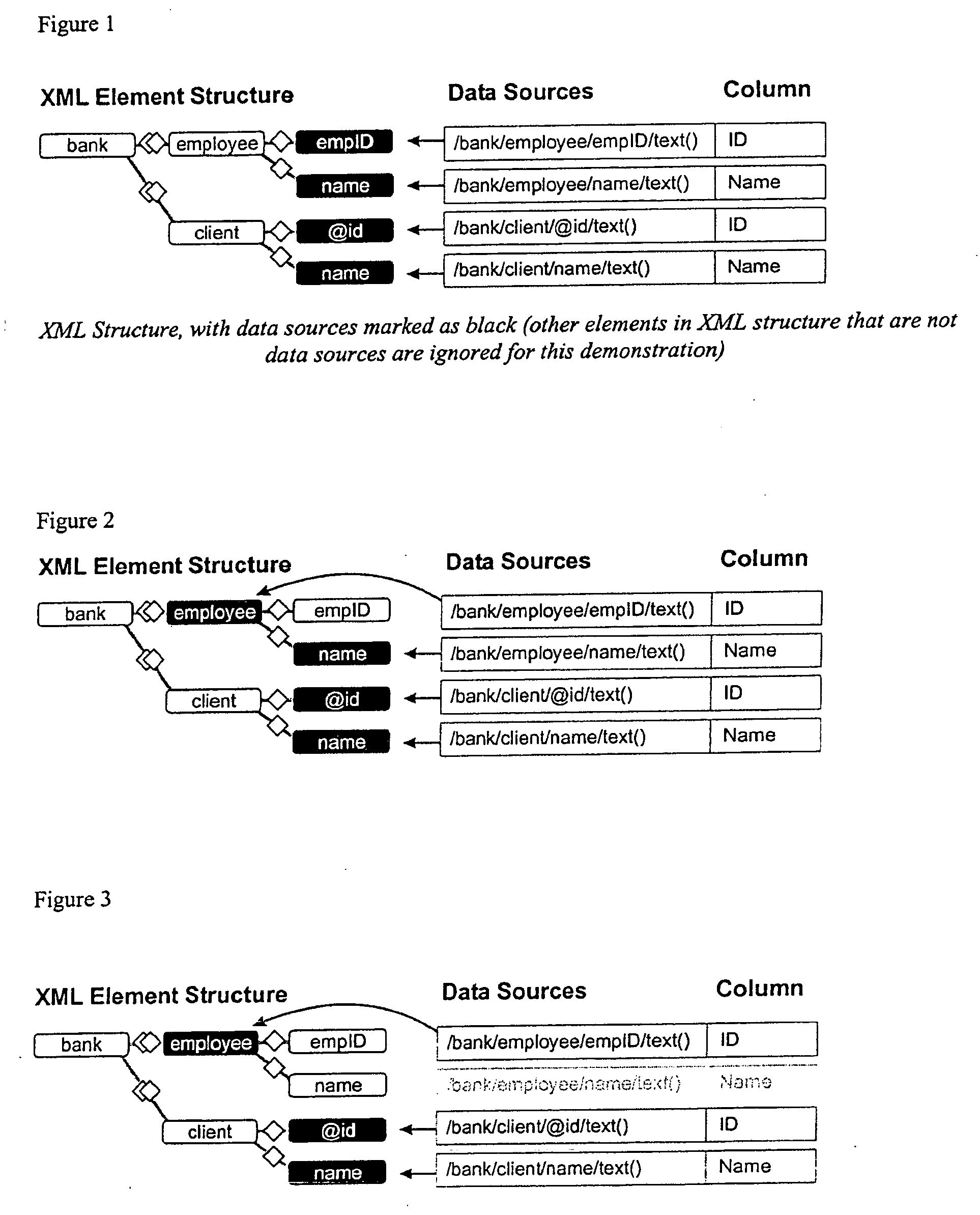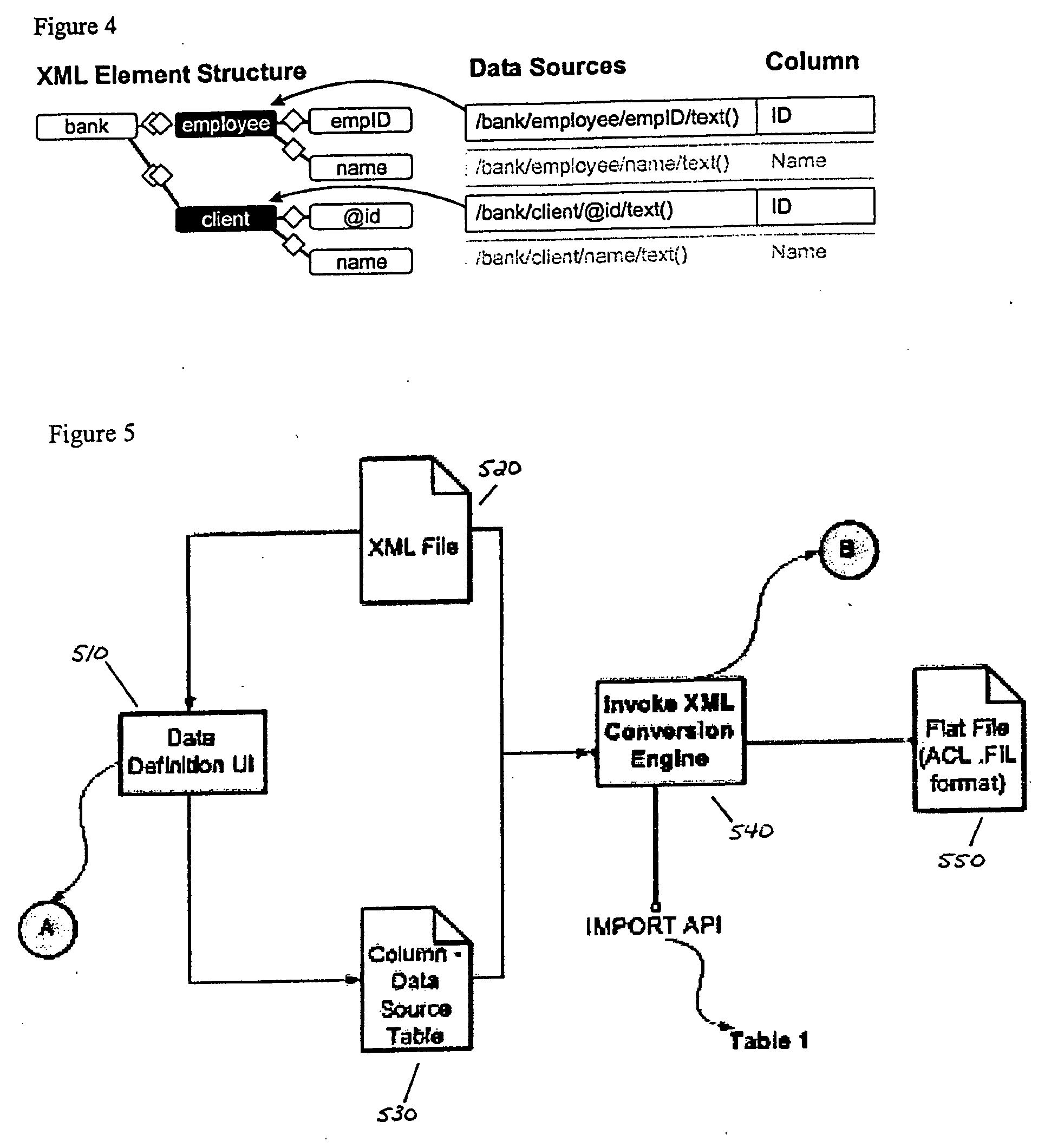Method and apparatus for processing XML tagged data
a technology of tagged data and methods, applied in the field of tabular structure conversion of data, can solve the problems of difficult table conversion, hierarchy, order, and type of each tabular element, and convert a rich hierarchical data format,
- Summary
- Abstract
- Description
- Claims
- Application Information
AI Technical Summary
Benefits of technology
Problems solved by technology
Method used
Image
Examples
example # 1
Example #1
[0078] To illustrate the method according to the invention, a simple example is provided using XML File #1.
XML File #1 Earth Canada USA Japan Singapore
[0079] The final result of processing XML File #1 is illustrated in Table #1.
TABLE 1PlanetContinentNationEarthNorth AmericaCanadaEarthNorth AmericaUSAEarthAsiaJapanEarthAsiaSingapore
[0080] The column data sources of XML File #1 are specified in Table #2.
TABLE 2ColumnData SourcePlanet / planet / name / text( )Continent / planet / continent / @name / text( )Nation / planet / continent / nation / text( )
[0081] A single row-terminating condition is determined, / planet / continent / nation, and the scopes for the column data sources determined as shown in Table 3.
TABLE 3ColumnData SourceScopePlanet / planet / name / text( ) / planetContinent / planet / continent / @name / text( ) / planet / continentNation / planet / continent / nation / text( ) / planet / continent / nation
[0082] When traversing the XML file, each element is examined when encountered in the context of its...
example
[0182] This example further details the processing of XML File #2 as shown in FIG. 337. It is noteworthy that this file contains column data sources that appear late in the file after certain rows have been written to the cache.
[0183] The preferred conversion of XML File #2 is to the format of Table 12.
TABLE 12NameLocationJanet SmithAdministration BuildingTim LayneSanderhurst BuildingJohn DunningSanderhurst BuildingFrank TannenbaumSanderhurst BuildingSarah DunningSanderhurst BuildingKevin HarperSanderhurst Building
[0184] Table 13 shows the column data sources defined for XML File #2.
TABLE 13ColumnData SourceName / personnel / person / name / text( ) / personnel / person / team / person / name / text( )Location / personnel / person / location / text( ) / personnel / person / team / location / text( )
The row-terminating conditions for these data sources are:
A: / personnel / person for
[0185] / personnel / person / name / text( ) and
[0186] / personnel / person / location / text( )
B: / personnel / person / team / person for
[0187] / pers...
PUM
 Login to View More
Login to View More Abstract
Description
Claims
Application Information
 Login to View More
Login to View More - R&D
- Intellectual Property
- Life Sciences
- Materials
- Tech Scout
- Unparalleled Data Quality
- Higher Quality Content
- 60% Fewer Hallucinations
Browse by: Latest US Patents, China's latest patents, Technical Efficacy Thesaurus, Application Domain, Technology Topic, Popular Technical Reports.
© 2025 PatSnap. All rights reserved.Legal|Privacy policy|Modern Slavery Act Transparency Statement|Sitemap|About US| Contact US: help@patsnap.com



